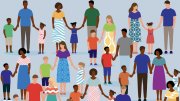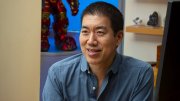1922
Professional waiters will be employed this year in the dining-room of the Harvard Union. For the past three years that work has been done by students, but the management believes the change will be economical. Breakfasts will cost 30 to 65 cents, luncheon, 65 cents, and dinner, 90 cents.
1932
Although the “business depression” prompts Harvard to allocate $40,000 for part-time jobs for 200 to 300 students, Herbert Hoover carries the College (1,211 votes) in the Crimson’s early presidential poll. The Alumni Bulletin attributes Norman Thomas’s strong showing (484 to FDR’s 620) to “an extraordinary increase of independent thinking among the students.”
1937
Harvard receives a $764,114 bequest from Mrs. Lucius W. Nieman, widow of the publisher of the Milwaukee Journal, “to promote and elevate standards of journalism in the United States.”
1942
The Fogg Museum sponsors a course in industrial and civilian camouflage…The Law School’s enrollment drops from 1,500 to 165.
1952
Harvard begins the largest financial-aid program in its history, allocating almost $1 million in scholarships, loans, and jobs for more than one-third of the undergraduate body.
1972
The Courses of Instruction includes for the first time a course in Vietnamese.
1982
Allston Burr Hall is demolished to make room for an addition to the Fogg Art Museum amid a flurry of other construction activity, including the remodeling of Lowell and Winthrop Houses and the extension of the Red Line subway tunnel northward. “Everywhere one walked, progress was afoot,” report the editors. “This was the summer of our discombobulation.”








